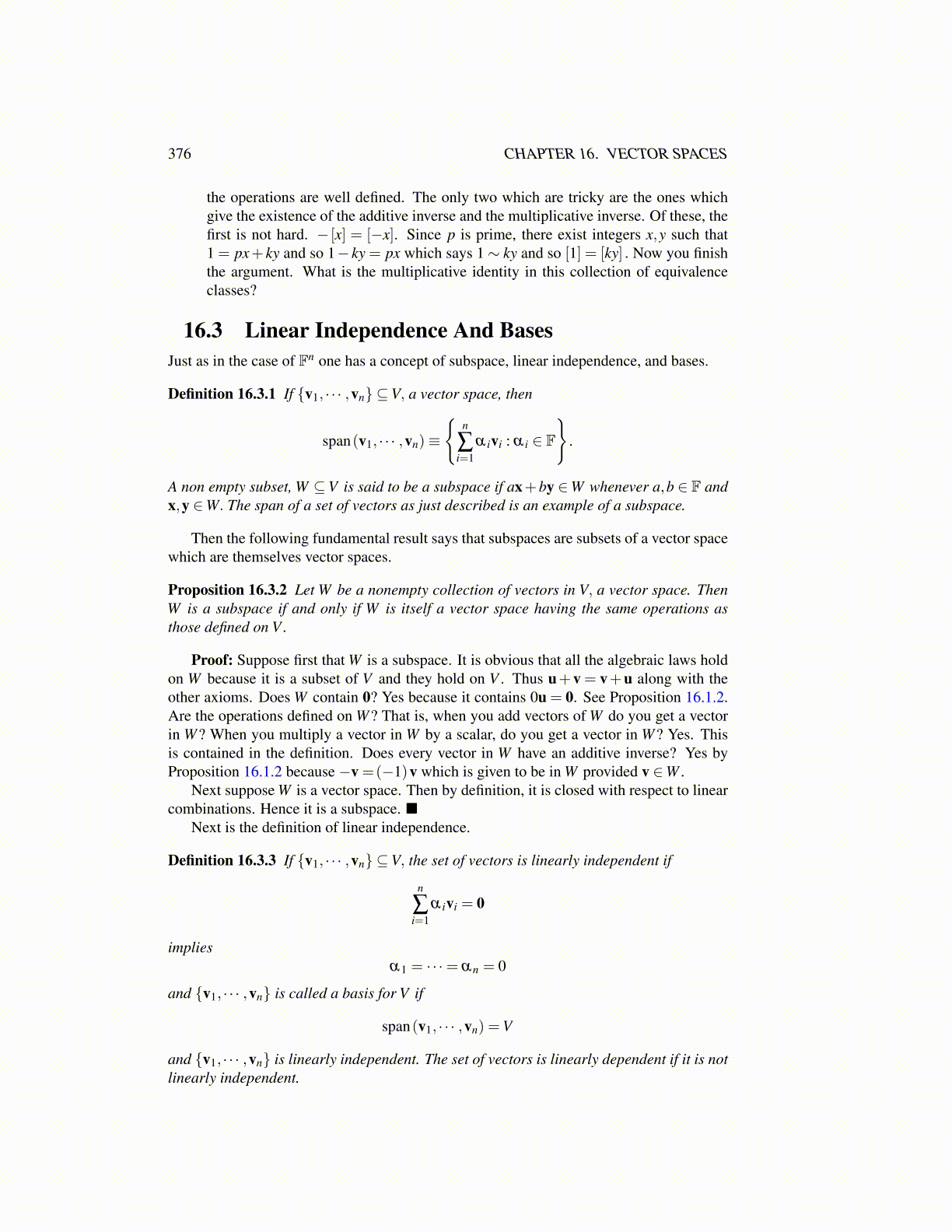
376 CHAPTER 16. VECTOR SPACES
the operations are well defined. The only two which are tricky are the ones whichgive the existence of the additive inverse and the multiplicative inverse. Of these, thefirst is not hard. − [x] = [−x]. Since p is prime, there exist integers x,y such that1 = px+ ky and so 1− ky = px which says 1∼ ky and so [1] = [ky] . Now you finishthe argument. What is the multiplicative identity in this collection of equivalenceclasses?
16.3 Linear Independence And BasesJust as in the case of Fn one has a concept of subspace, linear independence, and bases.
Definition 16.3.1 If {v1, · · · ,vn} ⊆V, a vector space, then
span(v1, · · · ,vn)≡
{n
∑i=1
α ivi : α i ∈ F
}.
A non empty subset, W ⊆V is said to be a subspace if ax+by ∈W whenever a,b ∈ F andx,y ∈W. The span of a set of vectors as just described is an example of a subspace.
Then the following fundamental result says that subspaces are subsets of a vector spacewhich are themselves vector spaces.
Proposition 16.3.2 Let W be a nonempty collection of vectors in V, a vector space. ThenW is a subspace if and only if W is itself a vector space having the same operations asthose defined on V .
Proof: Suppose first that W is a subspace. It is obvious that all the algebraic laws holdon W because it is a subset of V and they hold on V . Thus u+v = v+u along with theother axioms. Does W contain 0? Yes because it contains 0u = 0. See Proposition 16.1.2.Are the operations defined on W? That is, when you add vectors of W do you get a vectorin W? When you multiply a vector in W by a scalar, do you get a vector in W? Yes. Thisis contained in the definition. Does every vector in W have an additive inverse? Yes byProposition 16.1.2 because −v =(−1)v which is given to be in W provided v ∈W .
Next suppose W is a vector space. Then by definition, it is closed with respect to linearcombinations. Hence it is a subspace. ■
Next is the definition of linear independence.
Definition 16.3.3 If {v1, · · · ,vn} ⊆V, the set of vectors is linearly independent if
n
∑i=1
α ivi = 0
impliesα1 = · · ·= αn = 0
and {v1, · · · ,vn} is called a basis for V if
span(v1, · · · ,vn) =V
and {v1, · · · ,vn} is linearly independent. The set of vectors is linearly dependent if it is notlinearly independent.